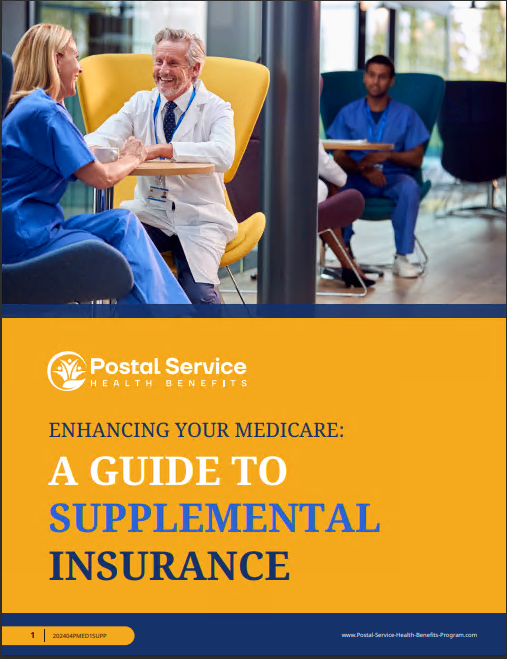Key Takeaways
-
Understanding your Postal Service Health Benefits (PSHB) costs, including premiums, deductibles, and coinsurance, is crucial for managing your healthcare expenses effectively.
-
By evaluating plan options and aligning them with your healthcare needs, you can make informed decisions that balance cost and coverage.
Breaking Down PSHB Costs: What You’re Really Paying For
Navigating the numbers behind Postal Service Health Benefits (PSHB) plans doesn’t have to feel overwhelming. Whether you’re new to PSHB or just want to refine your understanding, knowing how premiums, deductibles, copayments, and coinsurance fit into your overall expenses is a game-changer. Let’s break it all down and help you make sense of it.
Premiums: Your Monthly Baseline
Your premium is the fixed amount you pay monthly to maintain your health insurance coverage. PSHB plans offer varying premium levels depending on the type of coverage you choose: Self Only, Self Plus One, or Self and Family. Here are a few key factors that influence your premiums:
-
Coverage Tier: Self Only plans typically have the lowest premiums, while Self Plus One and Self and Family plans cost more due to the additional covered individuals.
-
Government Contributions: The federal government contributes a significant portion of the total premium cost, typically around 70%, depending on the specific PSHB plan, making these plans more affordable compared to private market alternatives.
-
Plan Choice: Premiums vary depending on the specific PSHB plan you select. High-deductible health plans (HDHPs) often have lower premiums compared to low-deductible options.
Deductibles: The Cost You Pay Before Coverage Kicks In
A deductible is the amount you pay out-of-pocket for healthcare services before your insurance begins to share the costs. Here’s what you should know:
-
In-Network vs. Out-of-Network: Deductibles for in-network services are usually lower, while out-of-network deductibles can be significantly higher. Sticking to in-network providers can save you money.
-
Plan Variability: Low-deductible plans may start covering costs sooner but come with higher premiums. Conversely, HDHPs have higher deductibles but lower monthly premiums.
-
Family vs. Individual Deductibles: If you’re on a Self and Family plan, you’ll need to meet a combined family deductible rather than separate ones for each member.
Copayments and Coinsurance: Sharing the Cost of Care
Once you meet your deductible, copayments and coinsurance kick in to determine your share of healthcare expenses.
-
Copayments: These are fixed amounts you pay for specific services, like $30 for a specialist visit or $75 for urgent care.
-
Coinsurance: This is the percentage of costs you’re responsible for after meeting your deductible, such as 20% for a hospital stay.
Understanding these terms helps you anticipate your out-of-pocket costs for various services. For example, routine doctor visits may only require a small copayment, while more extensive treatments might involve coinsurance.
Maximum Out-of-Pocket Costs: Your Safety Net
Every PSHB plan includes a maximum out-of-pocket (MOOP) limit, which caps the total amount you pay for covered healthcare services in a year. This figure includes deductibles, copayments, and coinsurance but excludes premiums. Once you hit this limit, your plan covers 100% of covered costs for the rest of the year.
Strategies to Make PSHB Costs Work for You
Understanding your costs is one thing—managing them effectively is another. Here’s how you can optimize your PSHB plan to balance coverage and affordability:
1. Evaluate Your Healthcare Needs
Start by assessing your healthcare usage. Are you someone who primarily needs routine care, or do you anticipate frequent visits, specialists, or prescription medications? Your needs should guide your choice of:
-
Premium vs. Deductible Tradeoff: Opt for a high-deductible plan if you’re healthy and need minimal care, or a low-deductible plan if you anticipate more frequent services.
-
Coverage Tier: A Self Only plan may suffice if you’re single, while families benefit from broader coverage.
2. Use In-Network Providers
Staying within your plan’s network can significantly reduce your costs. PSHB plans often negotiate lower rates with in-network providers, making services more affordable.
-
Check Provider Directories: Ensure your preferred doctors and facilities are in-network.
-
Out-of-Network Caution: Only use out-of-network providers for urgent or emergency care to avoid higher costs.
3. Leverage Preventive Care Benefits
Many PSHB plans cover preventive care services, such as annual checkups, vaccinations, and screenings, at no additional cost to you. Take full advantage of these benefits to maintain your health and avoid costly treatments down the line.
4. Manage Prescription Costs
If you rely on medications, consider how your PSHB plan handles prescription drug coverage.
-
Formulary Lists: Check if your prescriptions are included in your plan’s formulary.
-
Generic Medications: Opt for generic drugs when possible to save on costs.
-
Mail-Order Options: Some plans offer mail-order pharmacies with discounted rates for long-term medications.
5. Monitor Your Out-of-Pocket Spending
Keep track of your healthcare expenses throughout the year to see how close you are to meeting your deductible or MOOP limit. Knowing where you stand can help you budget for upcoming medical needs and maximize your plan’s benefits.
Timeline for PSHB Enrollment and Plan Changes
To make the most of your PSHB plan, you need to stay on top of important enrollment deadlines and opportunities for adjustments.
Open Season
The annual Open Season for PSHB plans runs from November 11 through December 13. This is your chance to:
-
Enroll in a new plan
-
Change your current plan
-
Adjust your coverage tier
Any changes made during Open Season take effect on January 1 of the following year.
Qualifying Life Events (QLEs)
Outside of Open Season, you can only make changes to your PSHB plan if you experience a Qualifying Life Event (QLE), such as:
-
Marriage or divorce
-
Birth or adoption of a child
-
Change in employment status
These events typically allow you a 60-day window to update your coverage.
Tips for Comparing PSHB Plans
Choosing the right PSHB plan involves comparing key features. Here are the most important elements to evaluate:
1. Premiums and Cost-Sharing
Balance the premium cost with deductibles, copayments, and coinsurance to find the plan that offers the best value for your needs.
2. Provider Networks
Ensure your preferred healthcare providers are included in the plan’s network to avoid unexpected out-of-pocket expenses.
3. Additional Benefits
Look for plans that offer extra perks like wellness programs, telehealth services, or fitness memberships. These benefits can add value and convenience.
4. Prescription Drug Coverage
If you take medications regularly, review the formulary and coverage tiers to estimate your annual prescription costs.
Staying Informed: The Key to Managing PSHB Costs
Understanding your PSHB plan’s cost structure is the first step toward taking control of your healthcare expenses. By regularly reviewing your plan details, tracking your spending, and taking advantage of preventive care and other benefits, you can ensure your healthcare budget works for you.
Making PSHB Work for You: A Financial Health Check
Now that you’ve got a clear picture of PSHB costs and strategies, it’s time to take action. Review your current plan, analyze your healthcare needs, and make adjustments during the next Open Season or after a Qualifying Life Event. With a bit of planning and attention to detail, you’ll be well-equipped to manage your healthcare costs effectively.





